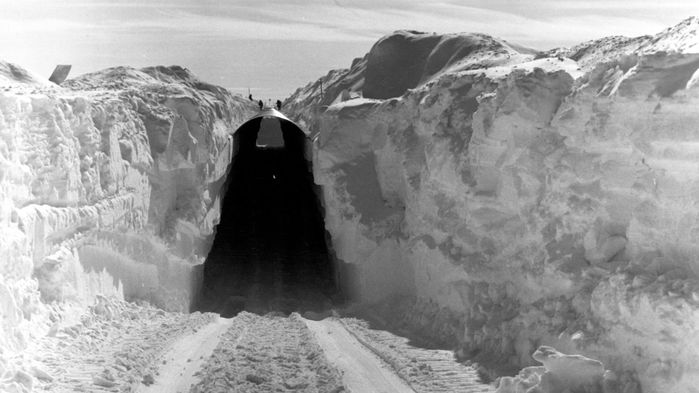SOURCE: Science
DATE: October 29, 2019
SNIP: In one of the Cold War’s oddest experiments, the United States dug a 300-meter-long military base called Camp Century into the ice of northwest Greenland in the early 1960s, powered it with a nuclear reactor, and set out to test the feasibility of shuttling nuclear missiles beneath the ice. A constant struggle against intruding snow doomed the base, which was abandoned in 1966. But Camp Century has left a lasting, entirely nonmilitary legacy: a 1.3-kilometer-long ice core drilled at the site.
The core, extracted by a team that included glaciologist Chester Langway, yielded a record of past temperatures that helped kick off studies of Earth’s ancient climate. And last week, dozens of scientists met here at the University of Vermont (UVM) to take stock of another gift from the core: mud from Greenland’s ancient land surface, serendipitously discovered in archived samples. New analyses of the mud suggest Greenland’s massive ice sheet was largely absent in a warm period during the past million years when the global climate was much like today’s. The samples likely have more stories to tell, UVM geophysicist Paul Bierman said at the gathering, which he organized to discuss recent results and plan further analyses.
Drew Christ, a geochemist in the lab who prepared the samples, sent thawed samples to the lab of Eric Steig, a glaciologist at the University of Washington in Seattle, who measured ratios of oxygen isotopes to tease out past temperature. He also sent pieces of frozen muck to Tammy Rittenour, a geologist at Utah State University in Logan who specializes in luminescence dating: blasting rocks with light to dislodge electrons that record when the rocks were last exposed to sunlight. The early results suggested the site may have been free of ice as recently as 400,000 years ago, she says, during a warm period between ice ages.
Bierman expected Greenland’s cold northern part—where Camp Century was located—would have been a stronghold of ice for millions of years, perhaps since the beginning of the Pleistocene 2.6 million years ago, when a gradually cooling Earth tipped into its current cycles of ice ages. Instead, the clock suggested ice has covered Camp Century for at most 1 million years—matching the GISP2 results. “It could be less, but a million years is the maximum,” Bierman says. “So you can’t argue for full Pleistocene stability at either site.”
“Camp Century is sort of a litmus test,” Steffensen adds. If you can say it was ice free, “that actually points at a severely reduced Greenland Ice Sheet.” Sea level would have been many meters higher than today, even though the climate 1 million years ago was similar to today’s greenhouse-warmed climate. “This stuff is really scary,” Schaefer says.

